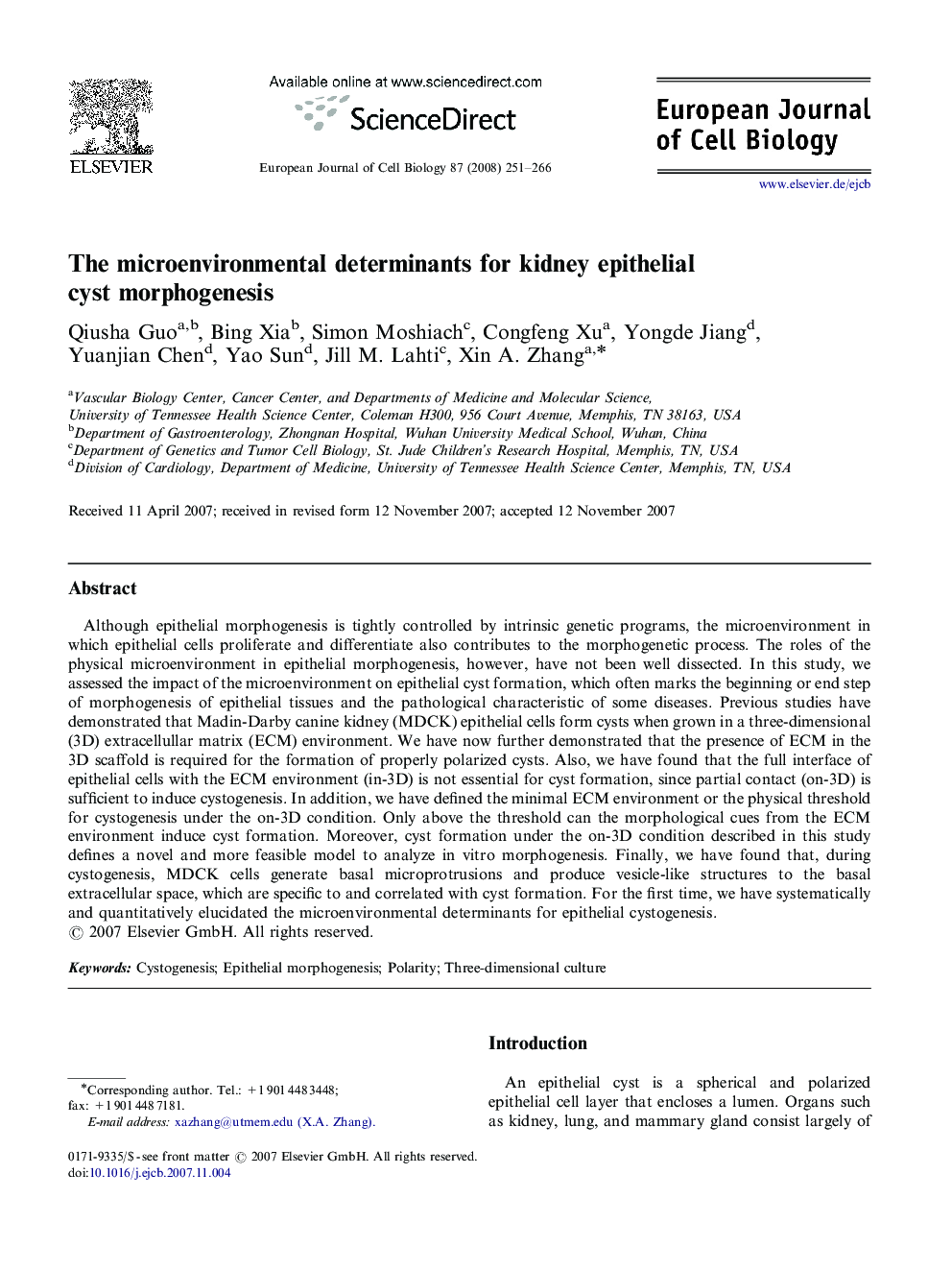| Article ID | Journal | Published Year | Pages | File Type |
|---|---|---|---|---|
| 2179251 | European Journal of Cell Biology | 2008 | 16 Pages |
Although epithelial morphogenesis is tightly controlled by intrinsic genetic programs, the microenvironment in which epithelial cells proliferate and differentiate also contributes to the morphogenetic process. The roles of the physical microenvironment in epithelial morphogenesis, however, have not been well dissected. In this study, we assessed the impact of the microenvironment on epithelial cyst formation, which often marks the beginning or end step of morphogenesis of epithelial tissues and the pathological characteristic of some diseases. Previous studies have demonstrated that Madin-Darby canine kidney (MDCK) epithelial cells form cysts when grown in a three-dimensional (3D) extracellullar matrix (ECM) environment. We have now further demonstrated that the presence of ECM in the 3D scaffold is required for the formation of properly polarized cysts. Also, we have found that the full interface of epithelial cells with the ECM environment (in-3D) is not essential for cyst formation, since partial contact (on-3D) is sufficient to induce cystogenesis. In addition, we have defined the minimal ECM environment or the physical threshold for cystogenesis under the on-3D condition. Only above the threshold can the morphological cues from the ECM environment induce cyst formation. Moreover, cyst formation under the on-3D condition described in this study defines a novel and more feasible model to analyze in vitro morphogenesis. Finally, we have found that, during cystogenesis, MDCK cells generate basal microprotrusions and produce vesicle-like structures to the basal extracellular space, which are specific to and correlated with cyst formation. For the first time, we have systematically and quantitatively elucidated the microenvironmental determinants for epithelial cystogenesis.
